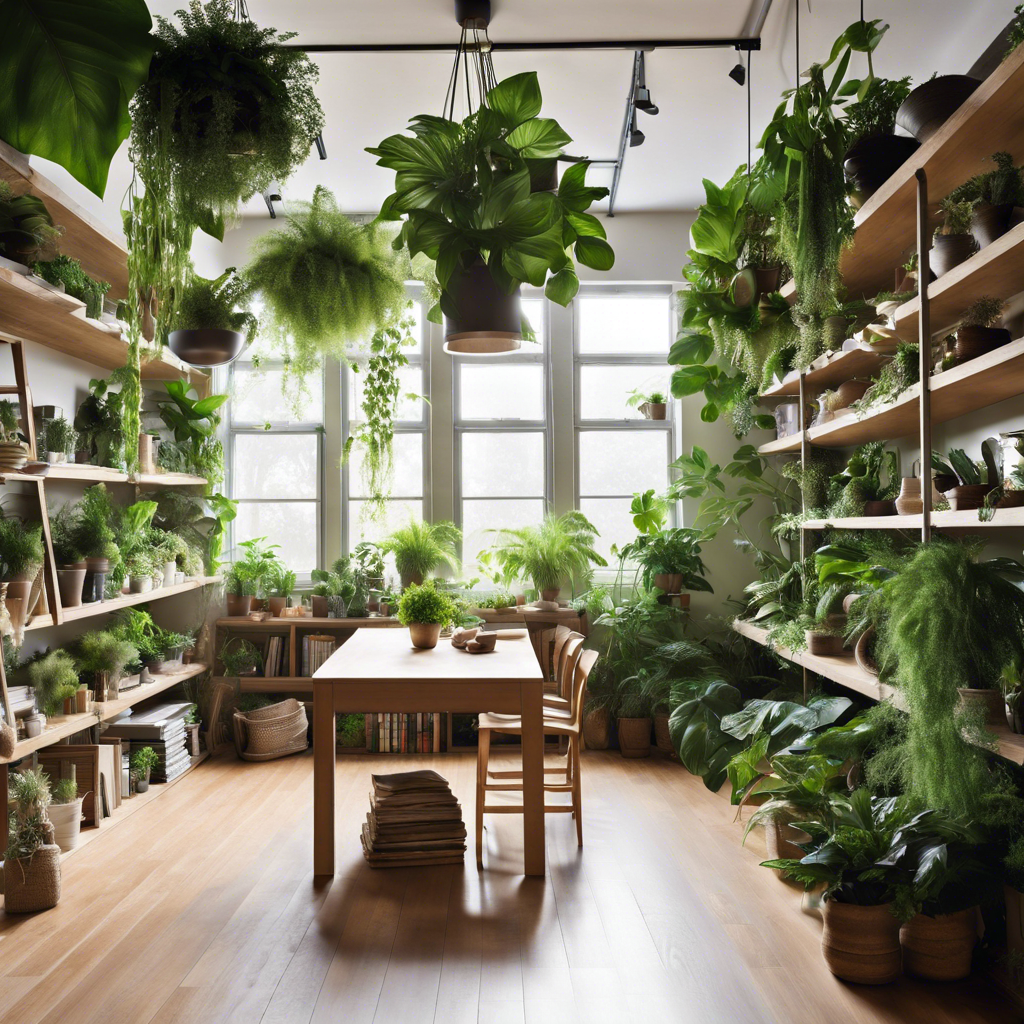
Indoor plants
Fiddle Leaf Fig (Ficus lyrata) – The Ultimate Guide to Growing and Caring for This Stunning Indoor Plant


DINKAR
10/22/2024
Introduction
The Fiddle Leaf Fig, scientifically known as Ficus lyrata, has become a favorite among plant enthusiasts and interior designers alike. With its large, glossy leaves that resemble a fiddle or violin, this tropical plant not only enhances the aesthetic appeal of any space but also brings a touch of nature indoors. Originating from the tropical rainforests of West Africa, the Fiddle Leaf Fig has gained immense popularity in homes and offices around the world.
In this comprehensive guide, we will explore everything you need to know about the Fiddle Leaf Fig, including its care requirements, propagation methods, common problems, and the benefits of having this magnificent plant in your home. Whether you’re a seasoned plant parent or a newcomer to the world of indoor gardening, this blog will equip you with the knowledge to successfully grow and care for your Fiddle Leaf Fig.
1. What is a Fiddle Leaf Fig?
The Fiddle Leaf Fig is a species of flowering plant in the Moraceae family. Its distinctively shaped leaves—large, broad, and violin-like—make it a striking addition to any indoor setting. In the wild, Fiddle Leaf Figs can grow up to 100 feet tall, but as houseplants, they typically reach heights of 3 to 10 feet, depending on the care they receive and the size of their pot.
Fiddle Leaf Figs are not just visually appealing; they also have a reputation for being a bit temperamental, requiring specific care to thrive. However, with the right knowledge and techniques, they can be rewarding houseplants that become focal points in your living space.
2. Types of Fiddle Leaf Fig
While the classic Fiddle Leaf Fig (Ficus lyrata) is the most common type, there are a few notable variations and cultivars:
- Ficus lyrata 'Bambino': This dwarf version has smaller leaves and a more compact growth habit, making it ideal for smaller spaces or tabletops.
- Ficus lyrata 'Variegata': Featuring stunning variegated leaves with cream and white markings, this variety adds a unique touch to the traditional Fiddle Leaf Fig.
- Ficus lyrata 'Compacta': This smaller cultivar maintains the characteristic fiddle-shaped leaves but grows in a more compact form, making it suitable for indoor spaces with limited light.
3. How to Care for a Fiddle Leaf Fig
Caring for a Fiddle Leaf Fig can be a rewarding experience, but it does require attention to its specific needs. Here’s a detailed guide on how to care for your Fiddle Leaf Fig:
A. Light Requirements
Fiddle Leaf Figs thrive in bright, indirect light. They can tolerate some direct sunlight, particularly in the morning, but too much can scorch their leaves. Ideally, place your Fiddle Leaf Fig near a south or west-facing window, but make sure it’s not in the direct line of harsh sunlight.
If you notice your Fiddle Leaf Fig leaning towards the light source, it’s a sign that it needs to be rotated or moved to ensure even growth.
B. Watering
Watering is one of the most critical aspects of Fiddle Leaf Fig care. These plants prefer to dry out slightly between waterings. Generally, water your Fiddle Leaf Fig when the top 1-2 inches of soil feel dry to the touch.
When watering, do so thoroughly, allowing excess water to drain out of the bottom of the pot. Make sure not to let the plant sit in standing water, as this can lead to root rot. During the growing season (spring and summer), you may need to water more frequently, while in the dormant season (fall and winter), reduce watering to avoid over-saturation.
C. Humidity and Temperature
Fiddle Leaf Figs thrive in higher humidity levels, typically between 40% and 60%. If your home has low humidity, consider using a humidifier, misting the leaves regularly, or placing the plant on a pebble tray filled with water.
As for temperature, Fiddle Leaf Figs prefer a warm environment. Keep them in a room with temperatures between 60°F and 75°F (15°C to 24°C). Avoid exposing them to cold drafts or sudden temperature changes.
D. Soil and Potting
Use a well-draining potting mix that retains some moisture but allows excess water to escape. A standard indoor potting mix combined with perlite or orchid bark can create an ideal environment for your Fiddle Leaf Fig.
Repot your Fiddle Leaf Fig every 1-2 years or when it outgrows its current pot. Choose a pot that is slightly larger than the previous one and ensure it has drainage holes to prevent water buildup.
E. Fertilization
During the growing season (spring and summer), feed your Fiddle Leaf Fig with a balanced, water-soluble fertilizer every 4-6 weeks. In the fall and winter, reduce fertilization as the plant’s growth slows down.
4. Propagating Fiddle Leaf Figs
Propagating Fiddle Leaf Figs can be done through stem cuttings, although it can be a bit more challenging than other houseplants. Here’s a step-by-step guide:
Step-by-Step Propagation Guide:
- Choose a Healthy Stem: Select a healthy stem with a few leaves. Look for a stem that has at least one node (the small bump on the stem where a leaf attaches).
- Cut the Stem: Using clean, sharp scissors or pruning shears, make a clean cut just below the node.
- Place in Water or Soil: You can propagate in water by placing the cutting in a jar with water, ensuring the node is submerged. Alternatively, you can plant the cutting directly into moist potting soil.
- Wait for Roots: If propagating in water, change the water every few days to keep it fresh. In about 4-6 weeks, you should see roots developing. If propagating in soil, keep the soil moist and wait for roots to establish before moving it to a larger pot.
5. Common Problems and Solutions
While Fiddle Leaf Figs are beautiful, they can also be susceptible to several common problems:
- Brown Spots or Edges: This is often a sign of overwatering or low humidity. Adjust your watering routine and consider increasing humidity levels.
- Yellowing Leaves: Yellowing leaves can indicate overwatering, underwatering, or insufficient light. Check the soil moisture and light conditions to determine the cause.
- Leaf Drop: If your Fiddle Leaf Fig is dropping leaves, it may be reacting to changes in environment, such as moving locations or changes in temperature. Ensure it's in a stable environment and adjust care as needed.
- Pests: Keep an eye out for pests like spider mites, mealybugs, and scale. If you notice any infestations, treat them with insecticidal soap or neem oil.
6. Benefits of Having a Fiddle Leaf Fig Indoors
Fiddle Leaf Figs are more than just visually appealing; they offer several benefits:
- Air Purification: Fiddle Leaf Figs help improve indoor air quality by filtering out toxins and pollutants, making the air cleaner and healthier.
- Aesthetic Appeal: With their dramatic, bold leaves, Fiddle Leaf Figs make a striking statement in any room, enhancing your home’s decor and bringing a touch of nature indoors.
- Mood Booster: Studies have shown that indoor plants, including the Fiddle Leaf Fig, can boost mood, reduce stress, and improve overall well-being.
Conclusion
The Fiddle Leaf Fig (Ficus lyrata) is a stunning and popular choice for indoor gardeners, offering a unique aesthetic that can elevate any space. While they require specific care and attention, the rewards of growing a healthy Fiddle Leaf Fig are worth the effort.